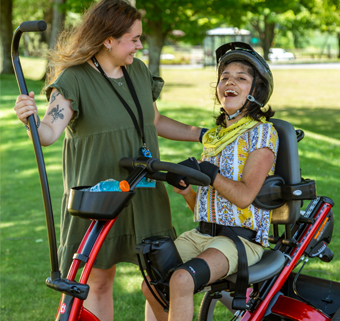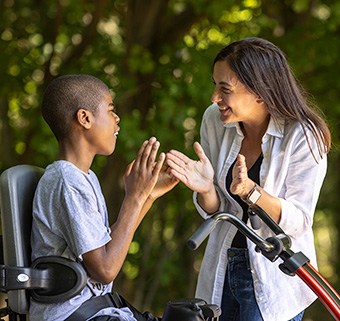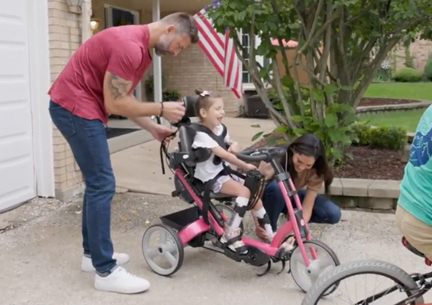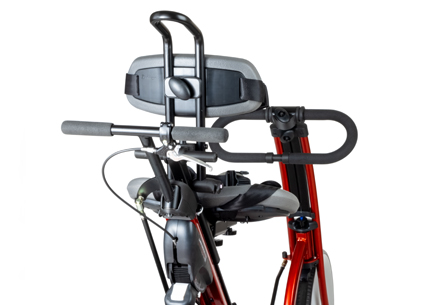Benefits of the Adaptive Tricycle as a Therapeutic Activity
| October 2008To all at Rifton:
A Large Rifton Tricycle was recently purchased by The Emily Ann Griffin Foundation for Basem, one of my students. His new Rifton trike includes many of the new upgrades — like the trunk support system and the rear steering bar.
I recently went to his house to see him in action on his new trike. First and foremost, his mother has never been happier than seeing her son, who is both cognitively impaired and blind, riding a bike just like other children his age. The rear steering feature is fantastic. Especially because Basem is blind, his mother has to do all the steering and guiding. The rear steering bar allows him to ride at a faster pace than when she uses the front guide bar.
I work in Dearborn, MI. My building currently has two of your trikes. The students look forward to riding these on a daily basis. These tricycles allow them to function in and be a part of society just as their peers. Thank you for your support and fantastic contribution to enriching my students’ lives.
Sincerely,
Rachel Jodway
Classroom Teacher
Dearborn Public School District
Michigan
Riding a tricycle provides both fun and fitness, and is a therapeutic activity that allows children to exercise their lower extremities. As the muscles move through cycling motions, they are flexed, extended and stretched. This range of motion is crucial for children with disabilities, because muscles are incapable of keeping up with bone growth unless fully extended. Disabling contractures are a consequence of immobility.
While an activity with a wide range of motion encourages muscles and bones to grow at the same rate, cycling has the added benefit of strengthening gross motor control development. On a Rifton Tricycle, the student participates to the extent that his or her ability allows. Over time, improved strength of quadriceps, hip extensors, and the ankle muscles, as well as improved trunk stabilization and balance will show itself. The staff member is in front of the student when using the guide bar, providing eye contact, encouragement and motivation. With practice, the student’s own spatial awareness will improve, to maneuver the tricycle with increasing independence.
In cycling, the hips, knees, and ankles practice muscle activation and motor control in similar patterns to walking. Riding a tricycle trains the student’s lower extremities to move in a reciprocal pattern and in a progression line, strengthening these muscle groups. Consistent opportunity for cycling may positively affect gait training.
As children grow older, it becomes an increasing challenge to interest them in rehabilitation. The use of a tricycle makes therapeutic activity fun and worthwhile. Trike riding encourages socialization and the development of friendships, especially when inclusion enables children with special needs to ride alongside their peers.
This remarkable statement should give therapists confidence to promote the use of supportive mobility equipment for the physically involved student throughout the school day. Adaptive tricycles and gait trainers provide practice in motor skills that positively impact muscles, joints and motor control for the student’s functional ability in the future.







